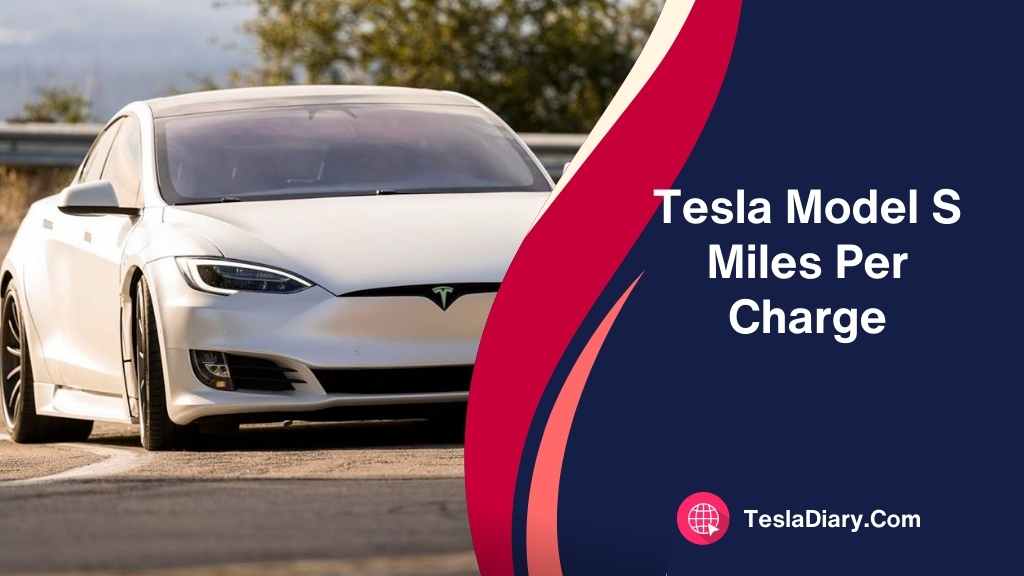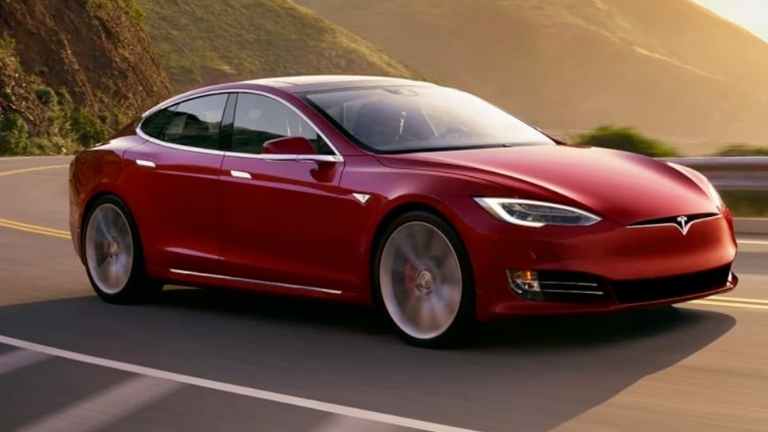The shift towards electric vehicles (EVs) has ignited a revolution in the automotive industry, and Tesla stands at the forefront of this movement.
Among Tesla’s impressive lineup, the Model S has garnered significant attention for its cutting-edge technology and remarkable range capabilities.
In this article, we will delve into the intricacies of Tesla Model S miles per charge, exploring the factors that determine its range, identifying the model with the longest range, and offering pro tips to enhance your Model S’s efficiency and range.
Factors Determining Tesla Model S Range
Tesla Model S can run up to 405 miles on a single full charge. However, this fluctuates a lot between 250 miles to 405 miles depending on various factors including Model S variations.

To understand the miles per charge of a Tesla Model S, one must first grasp the underlying factors that influence this crucial metric.
Battery Capacity and Chemistry
At the heart of every electric vehicle is its battery, and Tesla has pioneered battery technology that sets new standards in the industry. The size and chemistry of the battery pack play a pivotal role in determining the range of a Model S.
Tesla offers various battery options, denoted by their capacity in kilowatt-hours (kWh). As a general rule, a higher kWh rating translates to a longer range. For example, a Model S with a 100 kWh battery pack typically offers more range compared to a model with a 75 kWh battery.
Additionally, Tesla’s utilization of advanced lithium-ion battery chemistry enhances energy density and overall performance, contributing to longer ranges on a single charge.
Driving Habits
Your driving habits have a substantial impact on the miles per charge you can achieve with your Model S. Let’s explore how various driving factors influence your vehicle’s efficiency.
Speed and Acceleration
Speed demons, beware! High speeds and aggressive acceleration significantly reduce your Model S’s efficiency. Driving at a consistent, moderate speed, and avoiding rapid acceleration can extend your range.
Regenerative Braking
One of the advantages of electric vehicles is regenerative braking, which converts kinetic energy back into electrical energy during deceleration. Proper utilization of regenerative braking can help you recapture energy and improve your Model S’s range.
Environmental Factors
Beyond the vehicle itself and your driving habits, external environmental factors can affect your Model S’s miles per charge.
Temperature Effects
Temperature plays a pivotal role in battery performance. Extreme cold and heat can lead to reduced efficiency and range. In colder climates, pre-conditioning your Model S before driving can help mitigate these effects.
Terrain and Elevation
Terrain changes can significantly affect the range of an electric vehicle (EV), including the Tesla Model S. Here’s how various types of terrain can impact EV range:

Hilly or Mountainous Terrain:
Terrain with frequent elevation changes, such as hills or mountains, can have a notable impact on an EV’s range.
When ascending a hill, the vehicle must work harder to overcome gravity, which consumes more energy from the battery.
Similarly, when descending, regenerative braking can recover some energy, but steep descents may still require energy to be used for maintaining speed and control.
Effect on Range: Traveling through hilly or mountainous terrain can reduce the range compared to driving on flat terrain. The extent of the impact depends on the severity and frequency of the elevation changes.
Mountain Passes:
Mountain passes often involve prolonged uphill climbs followed by extended downhill descents. Climbing steep mountain passes can significantly drain the battery, especially if the ascent is long and continuous.
However, regenerative braking during the descent can partially compensate for the energy used during the climb.
Effect on Range: Traveling through mountain passes can result in a noticeable reduction in range, but the overall impact can vary depending on factors like the grade of the pass and how efficiently regenerative braking is utilized.
Flat Terrain:
Driving on flat terrain typically offers the most efficient conditions for maintaining or maximizing range. Electric vehicles tend to perform optimally when they don’t have to overcome frequent elevation changes.
Flat terrain is the ideal condition for maximizing range. Drivers can generally expect their EVs to achieve closer to the manufacturer’s specified range in such conditions.
Rolling Hills:
Terrain with rolling hills falls somewhere between completely flat terrain and mountainous terrain. While it doesn’t feature the extreme elevation changes of mountains, it still requires some additional energy to navigate uphill portions and offers some regenerative braking benefits on the way down.
Effect on Range: Range impact on rolling hills will be less pronounced compared to mountainous terrain but may still lead to a modest reduction in efficiency.
Off-Road or Rough Terrain:
Off-road driving, where the terrain is uneven and often unpaved, can be particularly challenging for EVs. Rough terrain may cause additional rolling resistance, reducing efficiency and range.
Effect on Range: Off-road driving can significantly reduce an EV’s range due to increased energy consumption caused by rough terrain and the potential need for increased power to overcome obstacles.
Vehicle Maintenance and Efficiency
Maintaining your Model S and optimizing its efficiency are key to extending its range.
Tire Maintenance
Proper tire maintenance, including inflation and alignment, can reduce rolling resistance, leading to improved efficiency and, consequently, more miles per charge.
Aerodynamics
Aerodynamics also plays a crucial role in range. Ensuring that your Model S’s exterior is free from unnecessary drag, such as roof racks or open windows, can enhance efficiency.
Which Tesla Model S has the Longest Range?
Tesla offers a range of Model S variants, each with different specifications, including range capabilities. To help you choose the Model S with the longest range to suit your needs, let’s explore these variants.
Model S Long Range
The Model S Long Range is a remarkable option for those seeking the utmost in range and performance. The Model S Long Range boasts an EPA-rated range of around 405 miles on a single charge.
Model S Plaid
While the Model S Plaid focuses on blistering acceleration and performance, it still offers an impressive range. As of my last update, the Model S Plaid had an estimated EPA range of approximately 396 miles.
Model S Performance
The Model S Performance variant, while slightly lower in range compared to the Long Range and Plaid models, is still a formidable option for those looking for both performance and a practical range. It typically offers an EPA-rated range of around 387 miles.
Model S Standard Range
Tesla initially offered a Standard Range Model S, but it was later discontinued. The Standard Range Model S had a more modest range compared to the Long Range variants, with an estimated EPA range of approximately 320 miles.
Pro Tips to Improve Model S Range
To maximize your Tesla Model S’s range, consider implementing these pro tips:
1. Efficient Driving Techniques
- Maintain a consistent, moderate speed.
- Use regenerative braking to your advantage by anticipating stops and decelerating gradually.
- Avoid rapid acceleration.
2. Preconditioning
- In cold weather, precondition your Model S before driving to warm up the battery and cabin, improving efficiency.
3. Software Updates
- Keep your Model S updated with the latest software from Tesla. Updates often include optimizations that can improve range and efficiency.
4. Charging Strategies
- Plan your routes to include Supercharger stops strategically.
- Use Tesla’s navigation system to find Supercharger locations and plan your charging stops efficiently.
5. Proper Maintenance
- Regularly check and maintain tire pressure and alignment.
- Keep your Model S clean and free from unnecessary external drag.
Conclusion
In conclusion, the miles per charge of a Tesla Model S is influenced by a multitude of factors, ranging from battery capacity and driving habits to environmental conditions and vehicle maintenance. Tesla offers a range of Model S variants, each with varying levels of range, with the Long Range models typically offering the longest range.
To get the most out of your Model S’s range, it’s essential to adopt efficient driving techniques, leverage regenerative braking, and consider environmental factors. Additionally, staying informed about software updates and employing effective charging strategies can help you maximize your Model S’s efficiency.
As Tesla continues to innovate and push the boundaries of EV technology, we can expect even greater range capabilities in future iterations of the Model S. In the meantime, embracing these tips and understanding the factors that determine your Model S’s range will ensure that you enjoy the full benefits of this remarkable electric vehicle.

